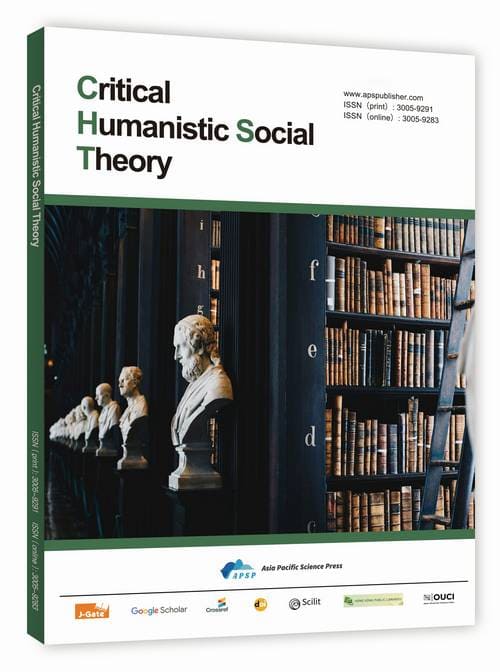Analysis of the “Bull” Image in Picasso's Guernica
DOI:
https://doi.org/10.62177/chst.v2i4.669Keywords:
Bull, Picasso, Guernica, Art PsychologyAbstract
The bull motif is a recurring visual element in Picasso's works. Centered on the bull imagery in his iconic piece Guernica, this study analyzes the symbolic significance of the bull and its deep psychological resonance with Picasso through the lens of art psychology, drawing parallels with two contemporaneous works: Franco's Dreams and Lies and The Bullfighter and the Great Bull. The study reveals that the bull serves as a crucial vehicle for projecting Picasso's inner self-image. The violence and indifference embodied by the bull in Guernica stem from the artist's conscious expression of trauma from the Spanish Civil War, while also incorporating unconscious manifestations of negative psychological factors rooted in childhood patriarchal pressures. The study further reveals that in Franco's Dreams and Lies, the bull as an embodiment of justice represents Picasso's earnest desire to end the civil war. In The Bullfighter and the Great Bullfight, the wounded, rebellious bull symbolically reenacts Picasso's emotional struggle with his wife Olga and his yearning to break free from constraints.
Downloads
References
Olivier Widmaier Picasso. (2020). Picasso: A Great and Hidden Life (Hu Boqiao, Trans.). Changsha: Hunan Fine Arts Publishing House, pp. 134–137.
Olivier Widmaier Picasso. (2020). Picasso: A Great and Hidden Life (Hu Boqiao, Trans.). Changsha: Hunan Fine Arts Publishing House, p. 66.
Greene, D., & Latimore, R. (1944–1959). Euripides: The Complete Greek Tragedies, a Selection of Views (Vol. 3). Chicago: The University of Chicago Press, p. 121.
Gedo, M. M., & Xu, C. (2007). Art as autobiography: Picasso's Guernica. World Art, (3), 86–88.
Zhao, C. (2019). Bulls, bullfighting, and minotaurs: Picasso's “Bullfighter” world. Art Review, (7), 174–177.
Gong, Y. (2019). The metaphorical characteristics of “Ox” culture in the political discourse of China and Spain. Cultural Studies Journal, (2), 211.
Lei, L. (2014). Which force is stronger? The symbolic meaning of horses in the Bible and Western literary works. Civilization, (1), 93.
Ashton, D. (1972). The Documents of 20th Century Art: Picasso on Art, a Selection of Views. New York: Harper & Row, pp. 133–141.
Olivier Widmaier Picasso. (2020). Picasso: A Great and Hidden Life (Hu Boqiao, Trans.). Changsha: Hunan Fine Arts Publishing House, pp. 162–163.
Olivier Widmaier Picasso. (2020). Picasso: A Great and Hidden Life (Hu Boqiao, Trans.). Changsha: Hunan Fine Arts Publishing House, pp. 11–12, 57.
Penrose, R. (1973). Picasso: His Life and Work. New York: Icon Editions, p. 306.
Gedo, M. M., & Xu, C. (2007). Art as autobiography: Picasso's Guernica. World Art, (3), 93.
Arnheim, R. (1973). The Genesis of a Painting: Picasso’s Guernica, a Selection of Views. Berkeley, Los Angeles & London: University of California Press, pp. 51–52, 86.
Olivier Widmaier Picasso. (2020). Picasso: A Great and Hidden Life (Hu Boqiao, Trans.). Changsha: Hunan Fine Arts Publishing House, p. 135.
Olivier Widmaier Picasso. (2020). Picasso: A Great and Hidden Life (Hu Boqiao, Trans.). Changsha: Hunan Fine Arts Publishing House, p. 55.
Olivier Widmaier Picasso. (2020). Picasso: A Great and Hidden Life (Hu Boqiao, Trans.). Changsha: Hunan Fine Arts Publishing House, p. 64.
Downloads
How to Cite
Issue
Section
License
Copyright (c) 2025 Jintao Wu

This work is licensed under a Creative Commons Attribution-NonCommercial 4.0 International License.
DATE
Accepted: 2025-10-10
Published: 2025-10-17

















